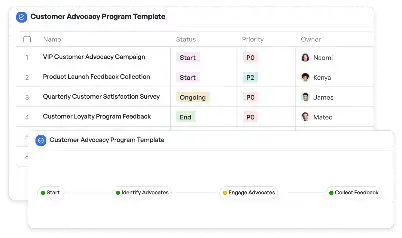Data Labeling Toolchain Configuration
Achieve project success with the Data Labeling Toolchain Configuration today!

What is Data Labeling Toolchain Configuration?
Data Labeling Toolchain Configuration refers to the structured setup and integration of tools and processes required to label datasets effectively. In the era of machine learning and artificial intelligence, labeled data is the backbone of training models. This configuration ensures that the labeling process is streamlined, accurate, and scalable. For instance, in industries like autonomous driving, healthcare, and retail, the need for high-quality labeled data is paramount. A well-configured toolchain can handle diverse data types such as images, text, and videos, ensuring consistency and reducing errors. By leveraging this configuration, teams can focus on the quality of annotations while automating repetitive tasks, making it an indispensable asset in data-centric projects.
Try this template now
Who is this Data Labeling Toolchain Configuration Template for?
This template is designed for data scientists, machine learning engineers, project managers, and annotation teams who are involved in creating labeled datasets. Typical roles include AI researchers working on natural language processing, computer vision engineers developing object detection models, and quality assurance teams ensuring the accuracy of labeled data. It is also ideal for startups and enterprises that need to scale their data labeling operations without compromising on quality. Whether you are a beginner setting up your first labeling project or an experienced professional optimizing an existing workflow, this template provides a robust foundation tailored to your needs.

Try this template now
Why use this Data Labeling Toolchain Configuration?
The primary advantage of using this configuration is its ability to address common challenges in data labeling. For example, inconsistent annotations can lead to poor model performance. This template includes predefined guidelines and validation steps to ensure uniformity. Another pain point is the inefficiency of manual labeling processes. By integrating automation tools, this configuration reduces the time and effort required for repetitive tasks. Additionally, managing large-scale labeling projects often involves coordination across multiple teams. This template provides a centralized platform for collaboration, ensuring that all stakeholders are aligned. Ultimately, it empowers teams to produce high-quality labeled datasets efficiently, making it a critical component in the AI development lifecycle.

Try this template now
Get Started with the Data Labeling Toolchain Configuration
Follow these simple steps to get started with Meegle templates:
1. Click 'Get this Free Template Now' to sign up for Meegle.
2. After signing up, you will be redirected to the Data Labeling Toolchain Configuration. Click 'Use this Template' to create a version of this template in your workspace.
3. Customize the workflow and fields of the template to suit your specific needs.
4. Start using the template and experience the full potential of Meegle!
Try this template now
Free forever for teams up to 20!
The world’s #1 visualized project management tool
Powered by the next gen visual workflow engine




